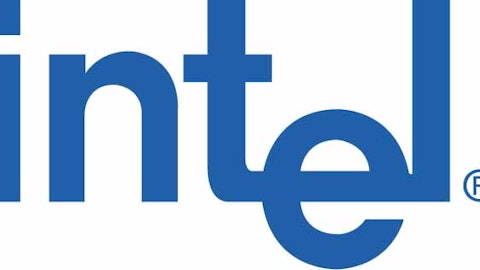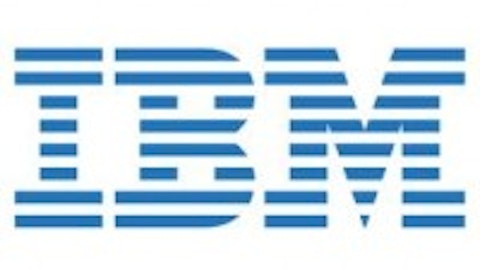Moore proved to be as adept an executive as he was a technologist. He became Intel Corporation (NASDAQ:INTC)’s CEO in 1979 and held that position until 1987, by which point it was clear that the computing revolution would be powered primarily by Intel Corporation (NASDAQ:INTC) chips. This was due in no small part to International Business Machines Corp. (NYSE:IBM)‘s choice of the Intel 8088 for its first PC and Microsoft Corporation (NASDAQ:MSFT)‘s decision to develop its operating system — first DOS, then Windows — around Intel chip architectures.
 The declining cost of a transistor and the simultaneous explosion of computing power led to a radical transformation of global industry that continues to this day. In 1965, the computing world was only one year removed from International Business Machines Corp. (NYSE:IBM)’s launch of the System/360 line of mainframes that marked a shift toward widespread business acceptance. IBM, as market leader in a relatively tiny computing industry, posted $3.75 billion in revenue that year. Not one of the 30 components of the Dow Jones Industrial Average (Dow Jones Indices:.DJI) of 1965 could be considered “tech” companies — IBM itself would not rejoin the index until 1979.
The declining cost of a transistor and the simultaneous explosion of computing power led to a radical transformation of global industry that continues to this day. In 1965, the computing world was only one year removed from International Business Machines Corp. (NYSE:IBM)’s launch of the System/360 line of mainframes that marked a shift toward widespread business acceptance. IBM, as market leader in a relatively tiny computing industry, posted $3.75 billion in revenue that year. Not one of the 30 components of the Dow Jones Industrial Average (Dow Jones Indices:.DJI) of 1965 could be considered “tech” companies — IBM itself would not rejoin the index until 1979.
Four decades after Moore first published his ideas, the PC industry alone generated $300 billion in annual sales, and more than 900 million PCs were used around the world. When software, services, connectivity, and other assorted information technology support industries are added in, the global information technology industry supported by Moore’s Law was worth approximately $3 trillion. Four of the Dow’s components — Microsoft Corporation (NASDAQ:MSFT), International Business Machines Corp. (NYSE:IBM), and Intel Corporation (NASDAQ:INTC) among them — were directly responsible for global PC adoption, and the other 26 components had all benefited enormously from efficiency gains wrought by computing in the workplace. Later, the Dow added a fifth “tech” component, further shifting its original industrial focus toward the new technology economy.
The images used here come from an Intel Corporation (NASDAQ:INTC) press kit released to celebrate the 40th anniversary of Moore’s original paper. The company also provided several fascinating facts about the progress of chip-making over those four decades (keep in mind that these were current in 2005 and have since been surpassed):
A chip-making tool in development could create images within 1/10,000th the thickness of a human hair, equivalent to driving straight for 400 miles without shifting your position on the road by more than an inch.
It would take you 25,000 years for you to switch a light switch on and off as many times as transistors can in one second.
If Moore’s Law applied to airlines, a flight between New York and Paris that took seven hours and cost $900 in 1978 would take less than a second and cost a penny in 2005.
A transistor cost about the same as printing one character (the letter “T,” for example) on a page of newspaper in 2005.
Four decades after Moore’s Law was first proposed, Intel Corporation (NASDAQ:INTC) had shrunk transistors to the point where 200 million could fit onto the head of a pin.
Moore’s Law won’t work forever, but by the time it breaks, the world’s most advanced chip-makers may be well on their way toward a completely new computing paradigm. In the meantime, this nearly 50-year-old proposal has proven remarkably durable and has become a simple and straightforward explanation for the explosion of computing power that marches forward, year after year.
The article The Simple Reason Why Computers Keep Getting Better and Cheaper originally appeared on Fool.com and is written by Alex Planes.
Fool contributor Alex Planes owns shares of Intel. Add him on Google+ or follow him on Twitter @TMFBiggles for more insight into markets, history, and technology.The Motley Fool recommends Intel. The Motley Fool owns shares of Intel, International Business Machines (NYSE:IBM)., and Microsoft.
Copyright © 1995 – 2013 The Motley Fool, LLC. All rights reserved. The Motley Fool has a disclosure policy.

